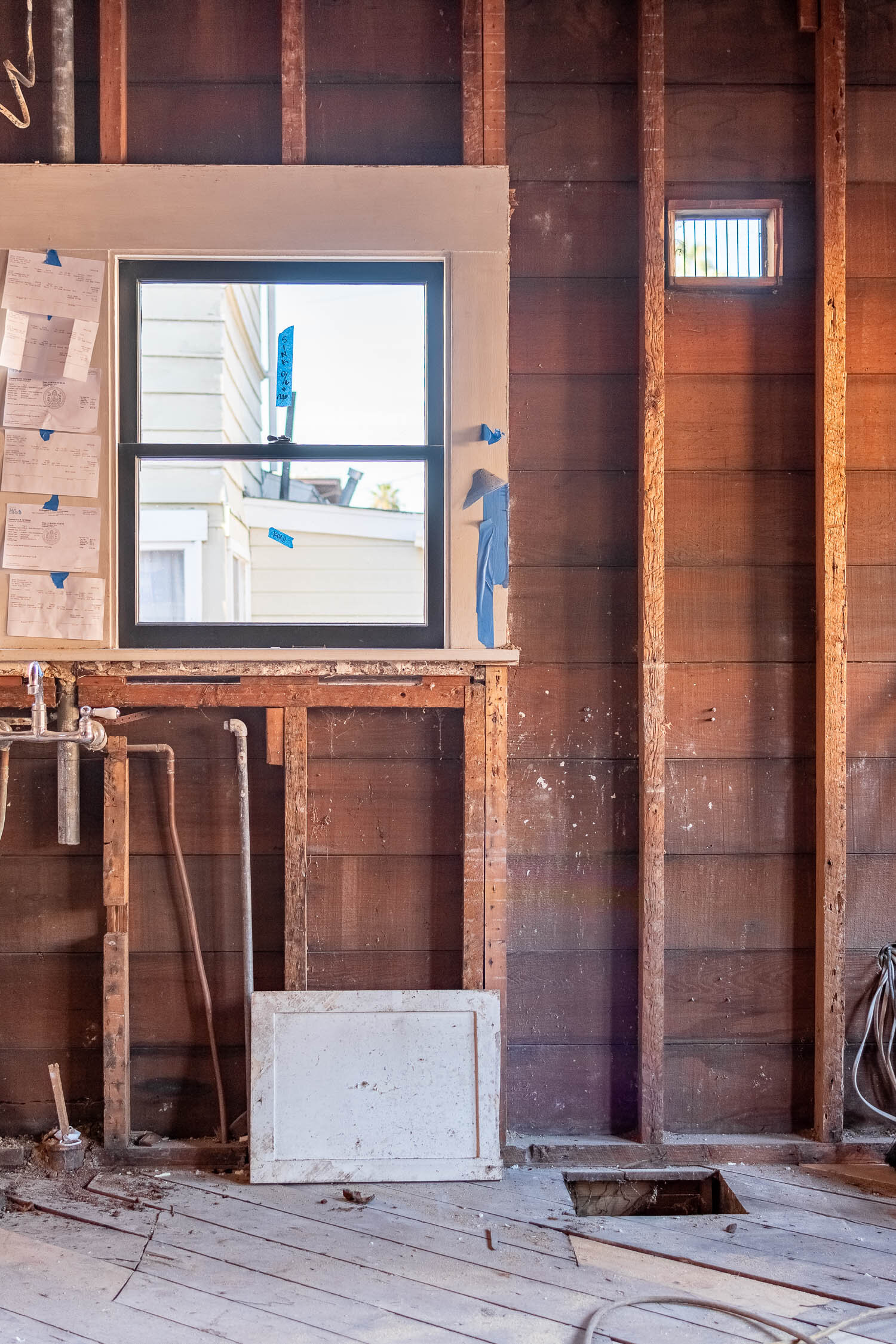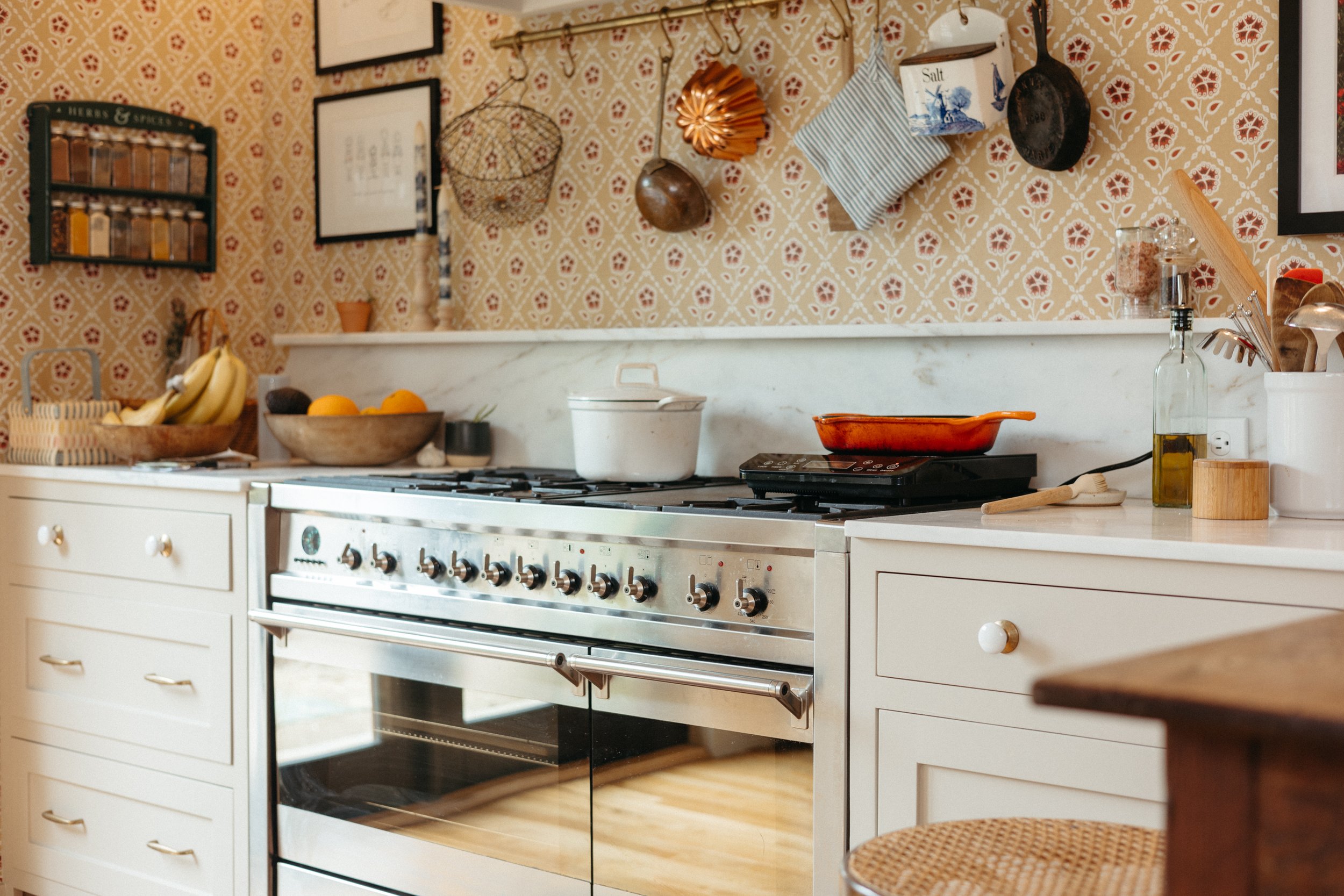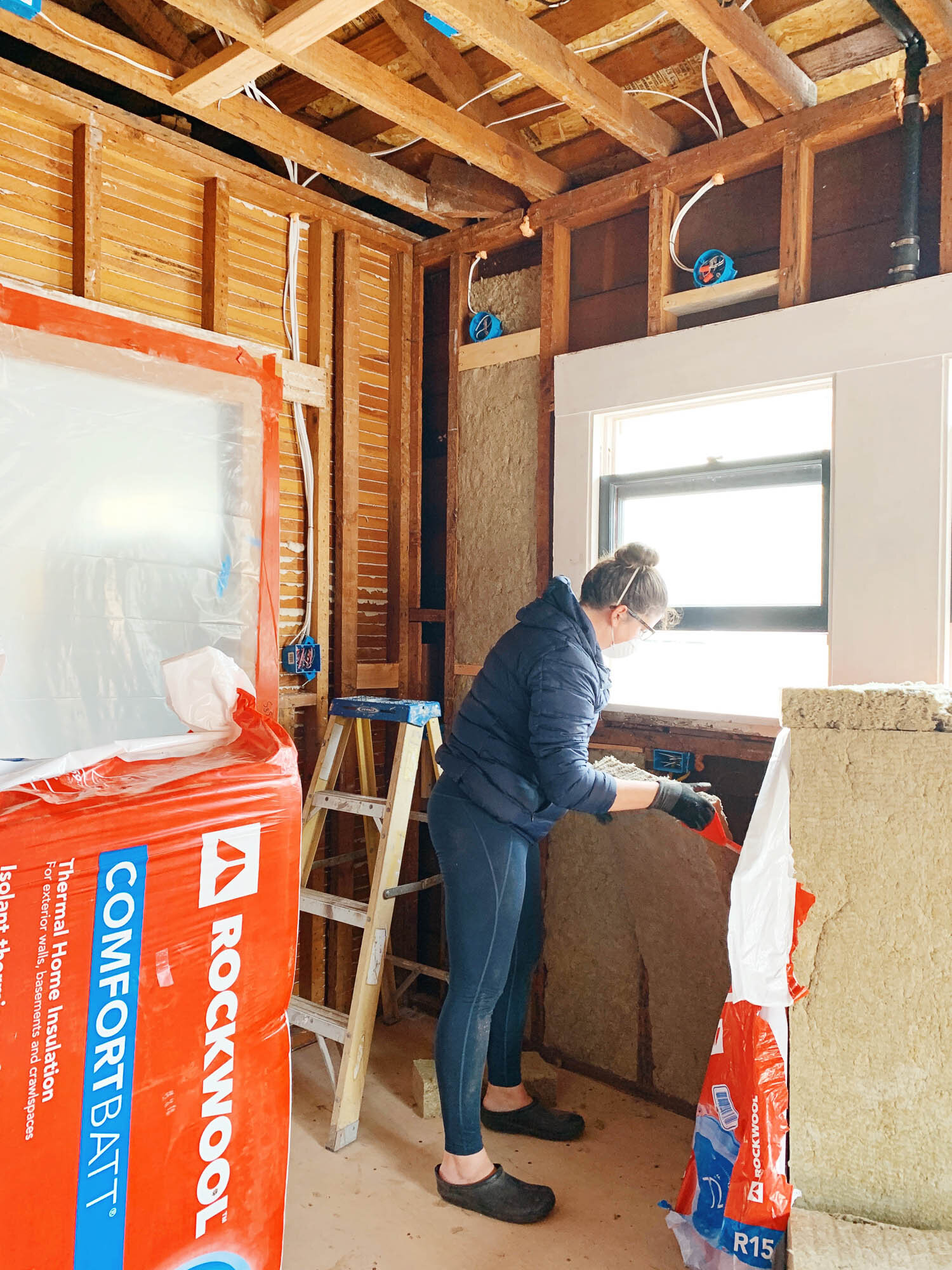Old House Archaeology - All of the Treasures We Found Hidden In The Walls
/One of the most thrilling parts of demolition is finding evidence of yesteryear! So often remnants of the previous renovations are left in the walls, or old mechanical systems are uncovered, or things mysteriously end up in weird places. Wanna see what we found during demolition?
Old Newspapers
It’s very common to find old newspapers in old houses. They were always on hand and served all sorts of functions. Sometimes a stack of a few sheets was all they needed to shim up the floors, sometimes it’s used as insulation, or sometimes I’ve seen a wad of paper shoved in between some plumbing pipes to keep them from corroding or rattling next to each other. The options are endless, so often you’ll find old papers when you peel back the old house layers.
The papers we found are quite curious. Our house was built in 1914/1915 and the bones of the kitchen were pretty original. The cabinets weren’t old, but the walls, the plaster, the floors, the doors, all of that - pretty original! Except. Underneath the fir flooring but on top of the subfloor were newspapers from 1929. Now, either there’s some hocus pocus time-traveling happening, or those floors were installed after May 31, 1929. Another option could be that in 1929 someone thought it would be fun to pull up a small section of flooring, put some newspaper underneath, and then patch it all back together for fun. Just to mess with me in 2020.
No matter the origins of the papers, they’re pretty cool to look through! One day when I have more spare time, I’ll sift through them and maybe find an article/ad/headline that resonates with us and we’ll frame it.
We also found a newspaper from 1974 from the Christian Science Monitor with a review of a spy movie. Let’s be real, the 1929 scraps from the local San Diego paper beat this one from 1974 any day. So the other ones are cooler. Sorry, 1974!
California Cooler
Speaking of cool things, we unearthed the remnants of the original California Cooler! I absolutely love these 100-year-old passive cooling systems for their energy-efficient methods. LOVE. I’m such a sucker for old fashioned energy preservation and smart ways folks took advantage of natural physics!
The photo of my California Cooler only shows the leftover vents, but you can see what it would have looked like here, here, and here. Those links also give you more details on how they worked, but here are my SparkNotes: A single cabinet in the kitchen was mounted on an exterior wall with a screened vent at the top and often another vent at the bottom. The cool air would come from the exterior or the crawl space into the lower vent and then using natural convection physics, the cool air would push the hot air up and out of the top vent. As the air moved through the cavity, it passed slatted or screen shelves where folks could put their veggies or other perishables. This neat system was primarily used on the west coat where it’s warm most of the year (hence the name California Cooler) and mounted on a north-side wall where no direct sun would hit it. Folks would be able to use this cool cabinet to keep things chilly in lieu of an ice box or to clear up space in the little ice box which cost money to operate - whereas the California cooler was free, environmentally friendly, and just darn cool. I’m smitten.
If you’re into California coolers, check out the cool closet at the Marston House! I gave a tour of this local 1905 home which has a full-size walk-in pantry cool closet here.
A Hammer
This little hammer was found in the wall behind the dining room hutch. It looks to be the size of an upholstery hammer, but I’m betting it was used for installing the wooden lath walls. I feel for the poor guy that was installing the walls then turned around to realize he lost his hammer. I bet he looked all over for it for ages!
Old lath hammers that I’ve seen in the past often have a hatchet style end to be able to cut the lath, so this does look different. Maybe this was a different style of lath hammer, or maybe it was used for something else in construction, or maybe it’s from something entirely different. I suppose that there’s a chance it fell through a small cavity in the attic and into the wall? Or maybe someone used it as a murder weapon and hid it in the wall?! Maybe it’s evidence of one of the slayings mentioned in the 1929 newspapers. It’s a mystery!
My sister is an archaeologist so I always turn to her when I find things like this in the house. I was hung up on getting a firm identification on it, and she said, “Ashley, calm down. Remember that lots of things served mix purposes!” Are there any hammer experts out there to set me straight?
Tin Floor Patch
Sometimes when patching holes in the floor, folks used pieces of metal to fill in where a pipe once was, or a knot in the wood. I always find them so charming especially when they used lids of soup cans or other scrap metal from around the house. People were zero waste 100 years ago!
Often the patch is on the finished floors, but I found a piece of metal patch on the subfloor. There’s nothing too fancy about it, but I like it.
Termite Damage
A not-cool thing that we found lots of was termite damage. UGH. Those buggers really make a mess of things. They ate through the fir flooring which meant I couldn’t salvage it. Then they ate through the subfloor which means we have to replace it. Then they ate through a couple of flooring joists which means the floor started to sag and we need to lift and replace support beams. Whyyyyyy?! Termites are up there with mosquitos on my top 5 list of least favorite species that do more harm than good. Biologists please feel free to argue this, but I hate those things. I mean, I know termites aerate the soil and mosquitos pollinate but coooome oooooonnn!
Anyway, we found lots of damage. I’m not surprised because we already dealt with it years ago when we refinished the whole house’s flooring. The one good thing is we’ve opened up the walls and the floors to really expose the damage so we can effectively repair it. Had we just done some bandaid repairs, we may never have been aware of the issues until the floor collapsed!
Corroded Plumbing
Since I’ve already ventured into talking about the expected bummer finds, here’s another. We also found lots of corroded plumbing. Again, we weren’t at all surprised since it naturally happens. Cast iron vent pipes break down and crack after 100 years. Galvanized plumbing also rusts and corrodes - which could be why you have low water pressure, poor drainage, or smelly plumbing. It’s to be expected. When we renovated the bathroom, we replaced of the cast iron with ABS plumbing. When the cast iron main sewer line cracked and leaked sewage water under the house, we replaced all of the main line so it didn’t happen again. When we put new plumbing fixtures in the bathroom, we ran all new copper pipes. Now that we’ve opened up the kitchen, we’ll do the same.
On safe drinking water:
I shared this on Instagram Stories and I got a few reactions along the lines of, “oh no!!! Do you not drink your tap water?! How do you filter that!? Should I replace all of my plumbing?!” I get it. This is rather gross and alarming. First of all, the cast iron is used as a vent and as sewage, so new fresh water comes into contact with that before coming out of the tap. The gross galvanized plumbing definitely is an avenue for your water before coming out of the sink. Replace it when you can, sure! But keep in mind that your drinking water touches your home’s plumbing for maybe 0.5% of it’s route to your sink. Our drinking water runs through lots and lots of municipal plumbing. And to be honest, we should be more worried about that infrastructure which is aging and doesn’t have much funding for maintenance. The City’s pipes are probably way worse than what’s in my house. And that should be a concern for our drinking water and the millions of others that don’t have the luxury of replacing their home’s plumbing. We should be worried about our community’s drinking water and we should be taking action at a local government level to reform our drinking water. Here are a few resources for extended reading: NYT: Safe Drinking Water, AJ+: Is Your Tap Water Safe To Drink?, The Guardian: Nestlé is Selling Stolen Water to Flint.
Knob and Tube
Electrical from 100 years ago gets a bad rap. Knob and Tube wiring (seen below as the black wires and the white porcelain cylinders and you can learn more about it here) is feared as being flammable and something people should rush to remove. However, I feel strongly that if you leave it alone, it’s okay. The issue is when people cut into it and splice it improperly. The fire hazards of knob and tube come from the people that splice it in 1940, then splice it again in 1970 and terminate an end in the cavity, then splice it again in 1990 and plug it into a power-hog refrigerator. Basically, don’t fear the knob and tube itself - fear the shoddy work over the years.
All this to say, we still are removing the old knob and tube. While the walls are open, we’ll remove the shoddy splices and run all new electrical and fresh circuits to each of the new appliances.
And that’s about it! Of course, we found lots of lath that I’m salvaging to use to build something unknown down the road. And we found some rot and some dirt and grime, but that’s about it for treasures. When we renovated the bathroom we found a special something, but that’s it for secret finds. Maybe one day I’ll find a bag of diamonds, but for now I’ll cherish my old hammer and newspapers.
What goodies have you found in your old walls?






























































